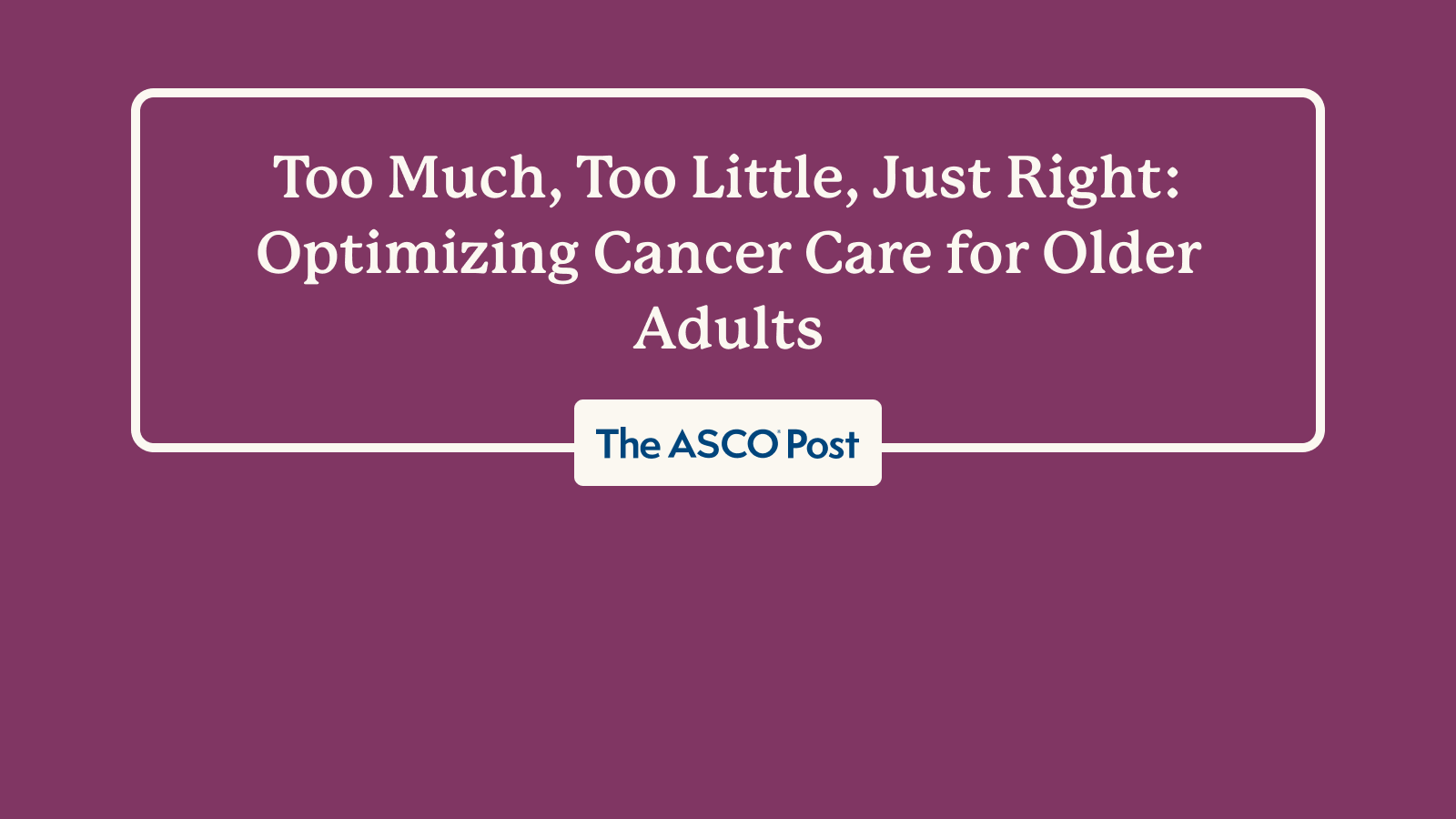Too Much, Too Little, Just Right: Optimizing Cancer Care for Older Adults
Imagine walking into a fancy restaurant only to find a menu consisting mostly of kids’ dishes. It would make no sense. Just 25% of restaurant diners are younger than age 12, and they rarely write Yelp reviews.
But when it comes to cancer treatment, this is not very far from what we do. The median age for a new cancer diagnosis is 67,1 and among those who die of cancer each year, 73% are older adults. Yet just one in four clinical trial participants is aged 70 or older.2 Consequently, guidelines for most new cancer therapies are based on a median age that is significantly younger than the patient population who actually receives these therapies.
That’s quite a conundrum. More than half of patients older than age 65 experience toxicity of grade 3 or worse while undergoing standard chemotherapy.3
The side effects are often worse with newer drugs released under the accelerated approvals process of the U.S. Food and Drug Administration (FDA), whose standard doses may often be toxic for even younger patients.4 Overtreatment of older adults can diminish quality of life without providing any meaningful improvement in survival, and it can even produce complications that may lead to higher mortality.
How can we improve geriatric oncology treatment?
In a perfect world, the toxicity problem would be redressed at its foundation, by including a correct proportion of older adults in clinical trials. This would not only help optimize treatment according to age, it might also enable physicians to better advise older patients of the impact of treatment on cognition, mobility, and other concerns. Unfortunately, it’s not that simple. Older patients are more likely to have comorbidities, transportation barriers, limited mobility, cognitive impairments, and other circumstances that make their participation in clinical trials impractical or render them outright ineligible. And, ironically, the higher likelihood of toxicity in the geriatric population makes many physicians less inclined to recommend them for clinical trials in the first place. It’s a real catch-22.

